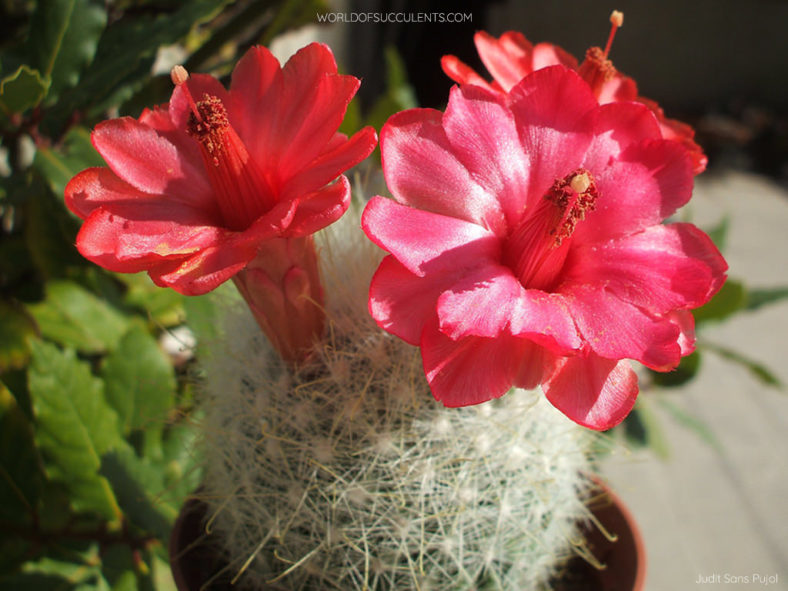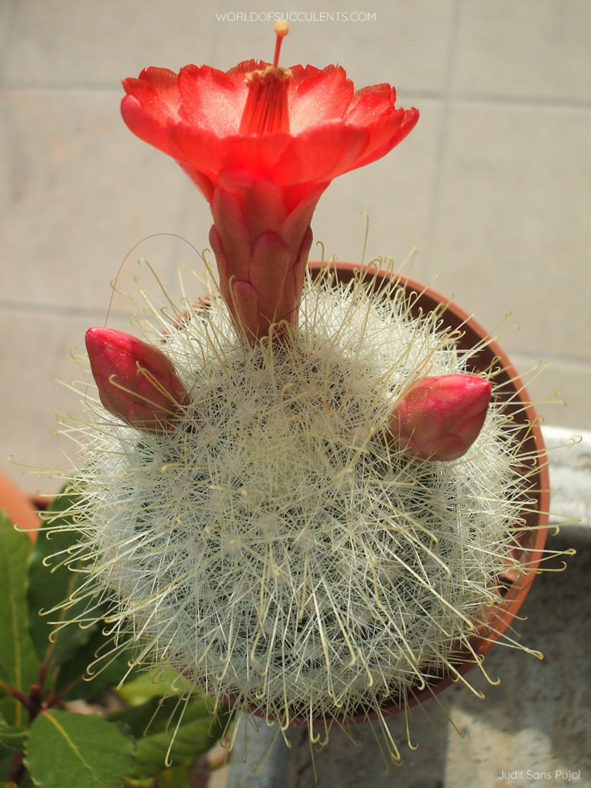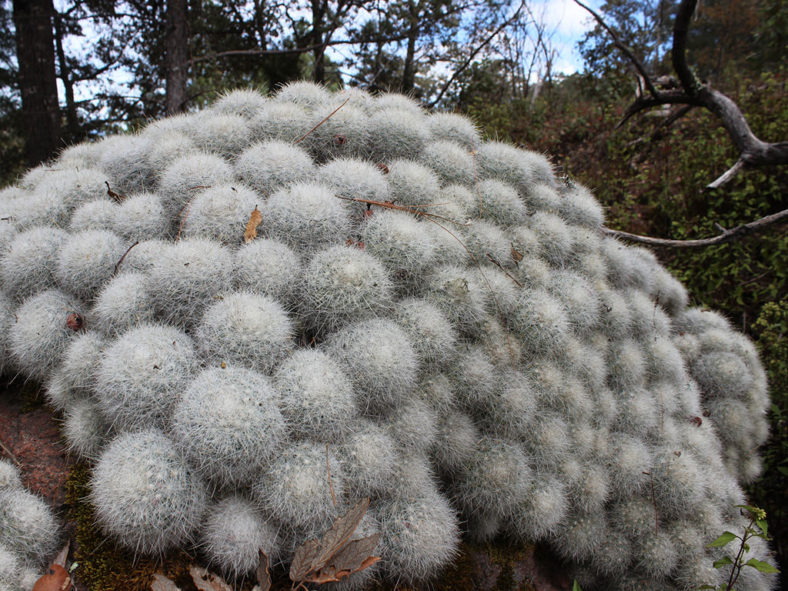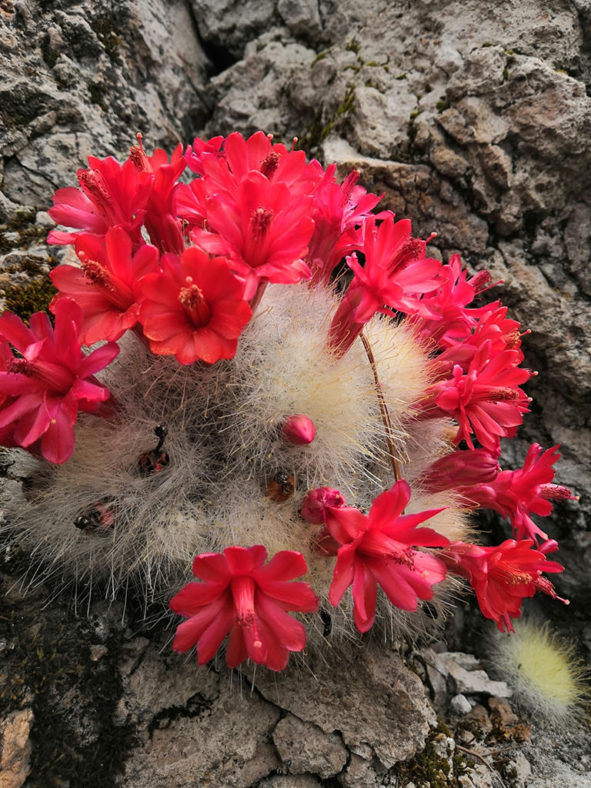Scientific Name
Mammillaria senilis Lodd. ex Salm-Dyck
Synonym(s)
Cactus senilis, Cochemiea senilis, Mamillopsis senilis
Scientific Classification
Family: Cactaceae
Subfamily: Cactoideae
Tribe: Cacteae
Subtribe: Cactinae
Genus: Mammillaria
Etymology
The specific epithet "senilis (SEE-nil-is)" means "of or pertaining to old people; aged, senile" and refers to the white spines that cover the stems, which are reminiscent of the white hair of an old man.
Origin
Mammillaria senilis is native to Mexico. It occurs in Chihuahua, Sinaloa, Durango, Zacatecas, Nayarit, and Jalisco.
Description
Mammillaria senilis is a small, basally branching cactus that forms a clump of globose to cylindrical stems with conical tubercles and dense clusters of long white spines in the axil of each tubercle. The axil of the tubercles is densely filled with white wool and numerous hair-like bristles. The stems can reach up to 6 inches (15 cm) in height and 4 inches (10 cm) in diameter. Each areole bears 4 to 6 central spines, the upper and lower ones hooked, and 30 to 40 radial spines. They can grow up to 0.8 inches (2 cm) long.
The trumpet-shaped flowers are usually orange-red, sometimes yellow, pink, or near white, and appear in late winter and early spring. They can reach up to 2.8 inches (7 cm) in length and 2.4 inches (6 cm) in diameter. Floral tubes are narrow, scaly, and up to 1.6 inches (4 cm) long. The fruits are silvery-red to greenish-white with black seeds.

How to Grow and Care for Mammillaria senilis
Light: Plant this cactus in an area of your garden that receives 4 hours of direct sunlight daily. If growing M. senilis indoors, place it near the brightest window in your home or office to ensure your cactus gets enough light. Place the pot on the balcony or in the garden for extra light from spring to fall if possible.
Soil: M. senilis requires a soil mix that provides root aeration and good drainage, whether grown outdoors or indoors. Use a commercial cactus potting mix, or create your own.
Temperature: This cactus is heat tolerant but not a cold-hardy plant. M. senilis can withstand temperatures as low as 30 °F (-1.1 °C). USDA Plant Hardiness Zones 10a to 11b, 30 to 50 °F (-1.1 to 10 °C).
Watering: From spring to fall, water deeply and wait for the soil to dry before watering again. Never let the pot sit in water. Suspend watering in the winter.
Fertilizing: M. senilis can benefit from fertilizing during the growing season. Apply a water-soluble fertilizer for cacti and other succulents. Suspend feeding during the winter when the plant goes dormant.
Repotting: Repot every two or three years into a slightly larger pot. The best time to repot your M. senilis is late winter or early spring, but the repotting process can be done almost any time of the year.
Propagation: There are two easy ways to propagate M. senilis: by seeds or by dividing offsets. The best time to remove offsets is in spring and summer. Sow the seeds in late spring or summer.
Learn more at How to Grow and Care for Mammillaria.
Toxicity of Mammillaria senilis
M. senilis is considered non-toxic to both humans and pets.
Links
- Back to genus Mammillaria
- Succupedia: Browse succulents by Scientific Name, Common Name, Genus, Family, USDA Hardiness Zone, Origin, or cacti by Genus
Photo Gallery
Click on a photo to see a larger version.


